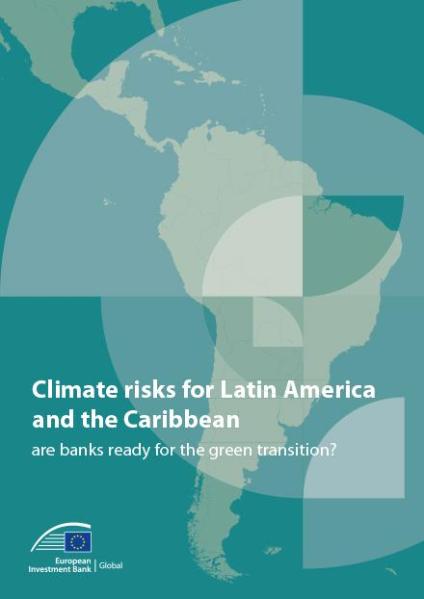
UNEP official: Every dollar invested in reviving degraded lands brings up to $30 in returns
Elizabeth Maruma Mrema, Deputy Executive Director of the United Nations Environment Program (UNEP), said every ...

Local banks of Latin America and Caribbean (LAC) are facing major challenges in coping with climate risks. These challenges include managing physical risks arising from extreme weather events, navigating the transition to a low-carbon economy, addressing portfolio concentration in high-risk sectors, and overcoming limited adaptation and mitigation capacity across the region.
This came in a new working paper presented by the European Investment Bank (EIB) at the 2023 Finance in Common Summit in Cartagena, Colombia. The paper — entitled Climate Risks in Latin America and the Caribbean: Are banks ready for the green transition? — sheds light on the environmental threats faced by the region and its banking sector.
Latin America and the Caribbean are already experiencing the detrimental effects of climate change, with Caribbean nations being particularly affected. They represent 0.2% of world gross domestic product (GDP), but account for ten times more in terms of the monetary cost of damage caused by climate change, and 20 times more in terms of the number of climate events. Chronic risks connected with the gradual impact of global warming are also relevant and particularly significant in the hottest regions of Latin America.
Despite contributing less than 5% of global CO₂ emissions, the region is disproportionately impacted due to its heightened exposure to acute climate events like cyclones, hurricanes and floods, chronic risks like droughts, and limited adaptation and mitigation capacity mainly due to reduced budgetary resources.
“As a leading financial institution, we recognise the critical role of banks in helping to address climate risks in Latin America and the Caribbean,” said EIB Vice-president Ricardo Mourinho Felix. “The EIB has a long track record of financing in the region for climate resilience, with more than €15 billion invested since 1978, and we are eager to do more. In collaboration with other multilateral development banks, we are piloting the use of Climate Resilient Debt Clauses to reduce debt distress as a direct consequence of natural disasters. The goal is to avoid a situation where countries do not address climate risks because of financial constraints, and to make sure that adaptation and mitigation become part of national and regional policies.”
“The region is currently receiving a relatively small share of global climate finance (around 6% in 2019 and 2020), and multilateral development banks can provide support with technical assistance and by developing new financial tools. To support the green transition and green investments it is crucial for banks to develop robust risk management frameworks, enhance risk assessment capabilities, and diversify loan portfolios to promote resilience. Overcoming these challenges requires innovative financial solutions, collaboration with international partners, and support from policymakers and regulators,” said Head of Country and Financial Sector Analysis in the EIB Economics Department Barbara Marchitto.
Elizabeth Maruma Mrema, Deputy Executive Director of the United Nations Environment Program (UNEP), said every ...
President Abdel Fattah El Sisi issued eight directives on the Labor Day to ensure providing ...
Paysky, the leading digital payment solutions provider, was named among Forbes Top 50 Fintech companies ...


اترك تعليقا